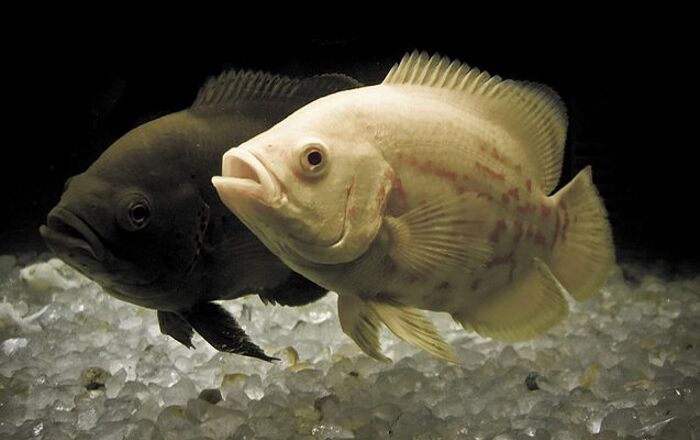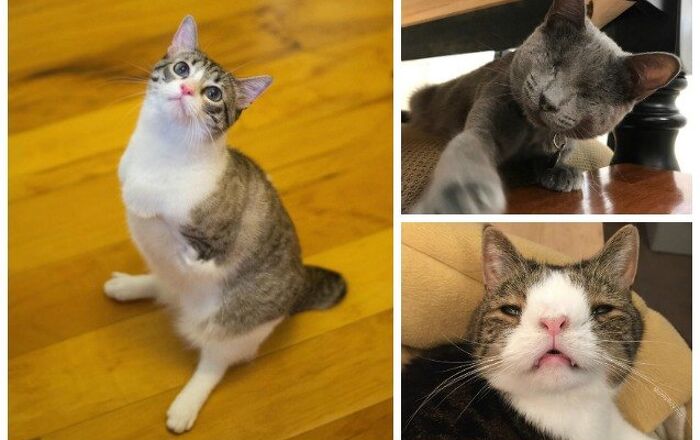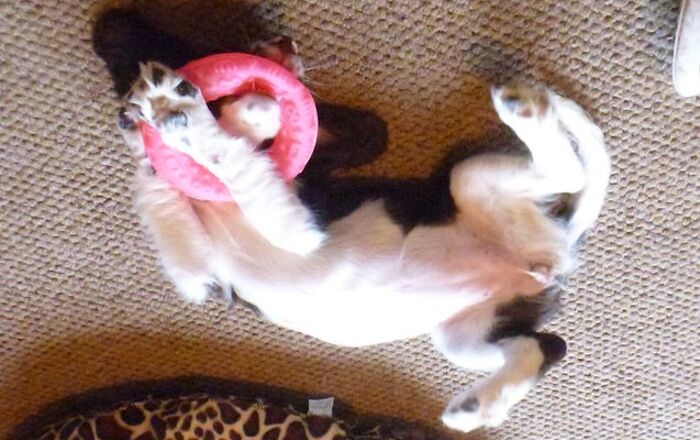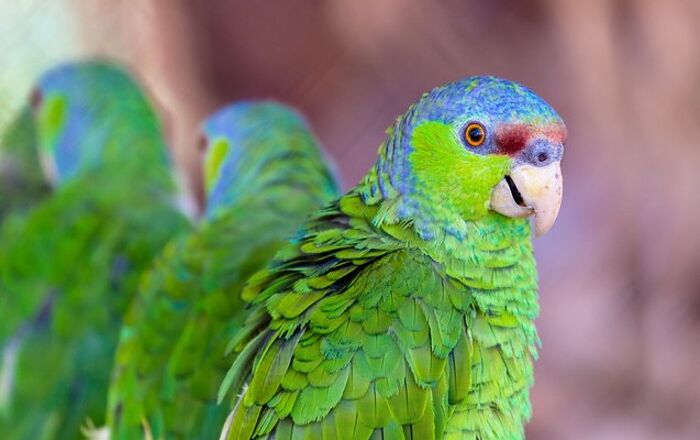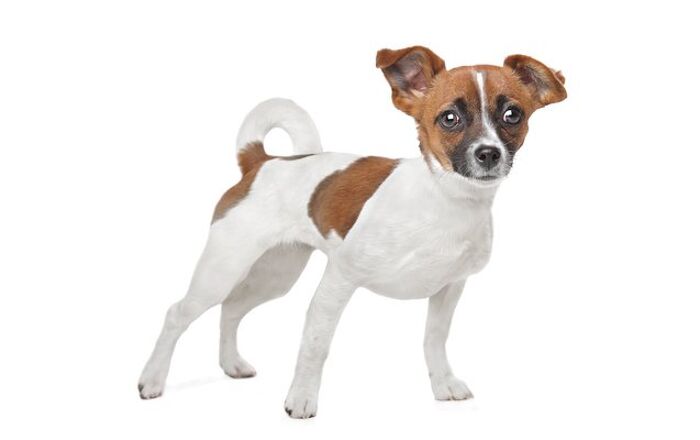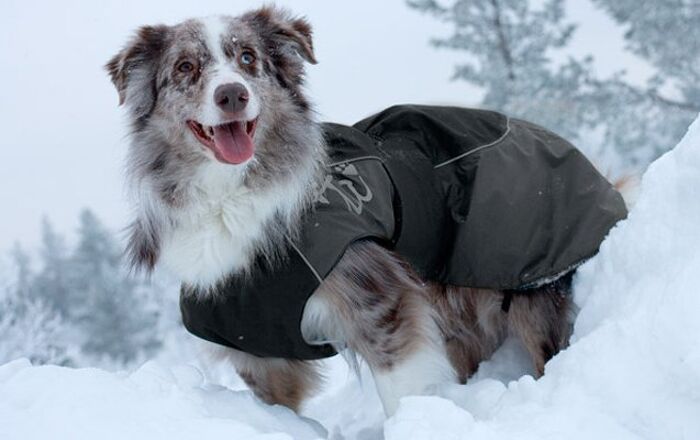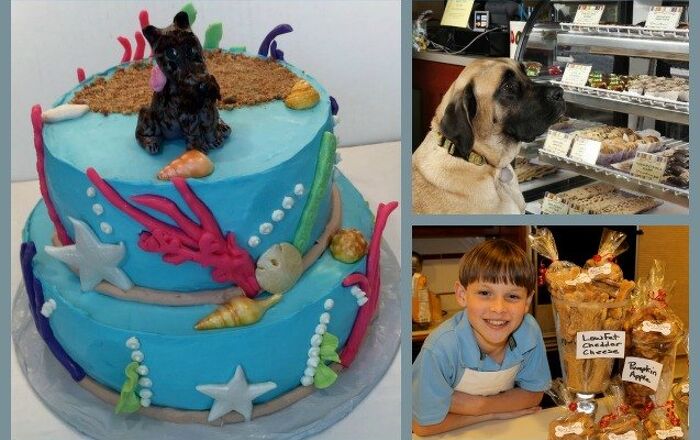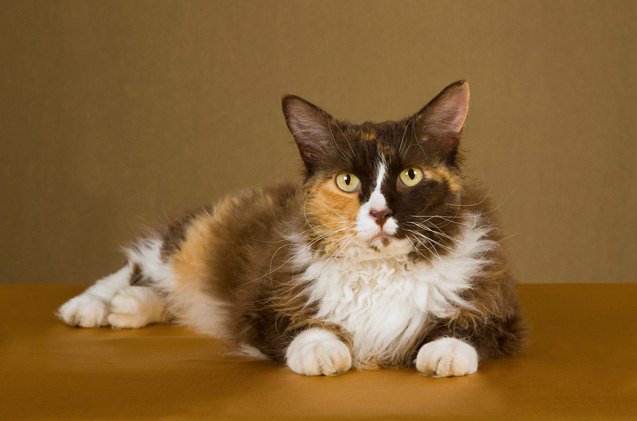
LaPerm Breed History
In 1982, a short-haired, brown tabby barn cat on a farm in Dalles, Oregon gave birth to six kittens. One was bald with a blue tabby pattern on her skin. To the astonishment of owners Richard and Linda Koehl, eight weeks later the kitten grew a soft, wavy coat with a silky texture. For the next ten years, more cats like baby “Curly” appeared among the barn cats. Finally the Koehls investigated the genetics and discovered the lovely aberration was a spontaneous mutation of a dominant gene. This tiny colony became the foundation of the LaPerm cat, which was developed through a controlled breeding program. Christened “LaPerm,” which is French for wavy or rippled, the breed received TICA and CFA recognition in 1996. After being exported to the UK in 2002, the LaPerm was awarded GCCF recognition in 2004. Although rare and still under development, the breed has gained rapid popularity around the world.
Elegant and athletic, the active LaPerm is also an excellent lap cat with an affectionate, gregarious, and inquisitive nature.
Breed Traits
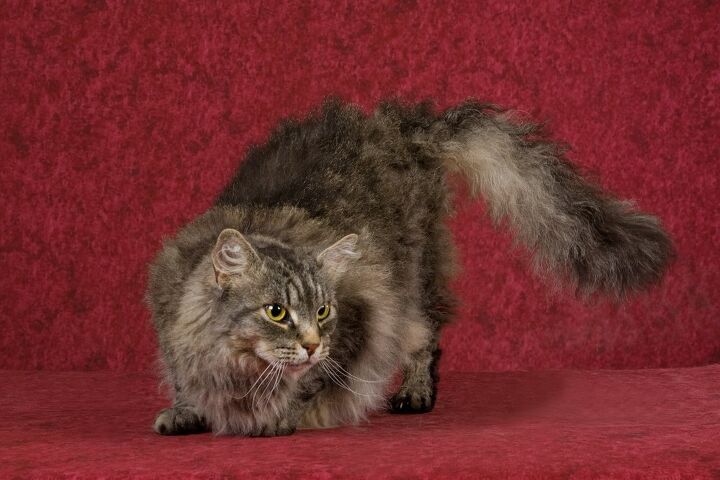
Elegant and athletic, the active LaPerm is also an excellent lap cat with an affectionate, gregarious, and inquisitive nature. They make superb family pets, but will likely pick one person for their own. The breed has a tendency to literally reach out for human contact, tapping with their paws to get your attention, or rubbing against you while purring happily. They do well with other cats, and with dogs.
Overall Description
The small to medium-sized LaPerm is an athletic cat with long legs and a long neck. Rounded contours soften the wedge-shaped head that broadens slightly at the muzzle. Flared ears and almond-shaped eyes create a sweet, but mildly exotic look. The breed’s distinctive coat ranges in texture from soft waves to long curls. The underside, throat, and base of the ears will have the tightest curls. Longer-haired variants generally have a ruff and a plumed tail. When shorthaired, the LaPerm’s coat parts in the middle, and his tail is a “bottle brush.” Kittens are born bald or lose their hair within two weeks. Over the next four months, their curly coat will grow in. Coat variations continue throughout the cat’s life, including periodic “molting.” The LaPerm’s light, springy fur feels textured to the touch rather than silky, and stands slightly away from the body.
Colors
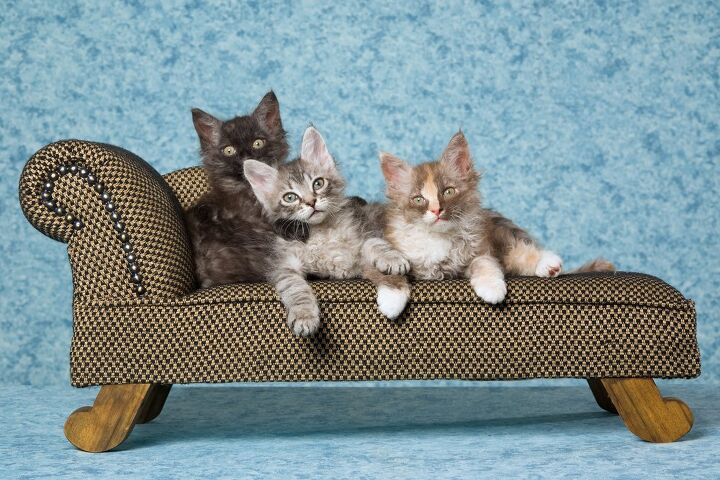
Thanks to its barn cat origins, the LaPerm is seen in every imaginable combination of color, pattern, and texture.
Grooming Requirements
It’s always best to comb through a LaPerm’s coat before the animal is bathed to lessen the chance of tangling. Do not blow dry the coat, as the heat tends to straighten out the breed’s trademark curls. In between baths, use a metal comb with rolling teeth the removes dead hair. Three or so brushings a week are sufficient to keep the coat in excellent shape, and, since the LaPerm enjoys this process enormously, there is no struggle to get the animal to sit still. In fact, many LaPerms ask to be brushed.
Photo credit: Linn Currie/Shutterstock

